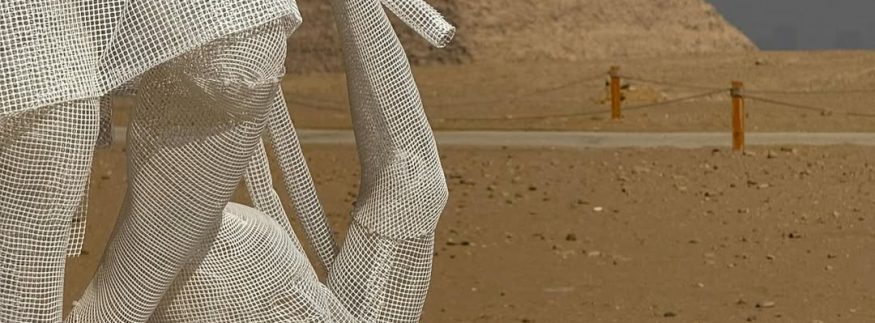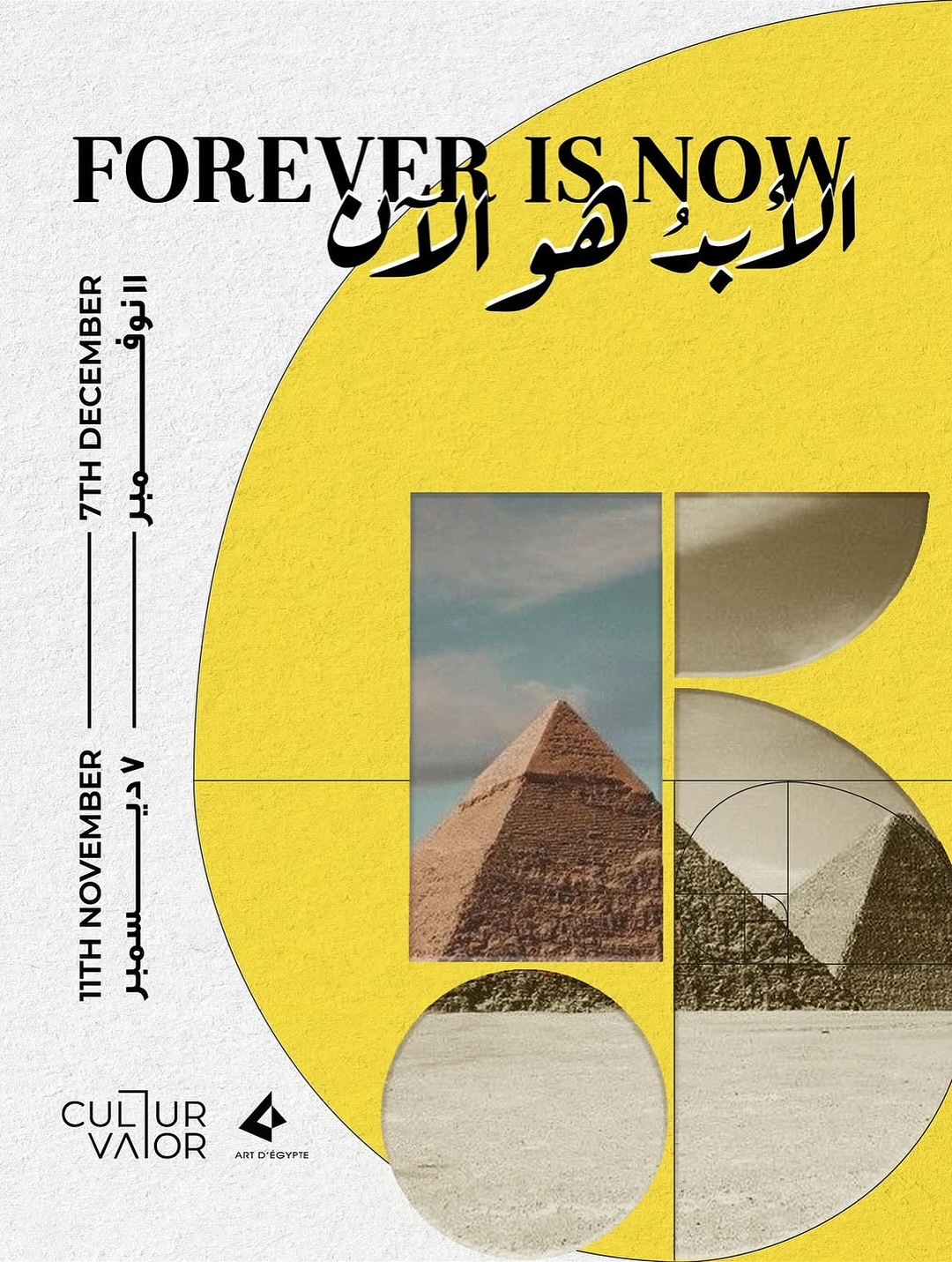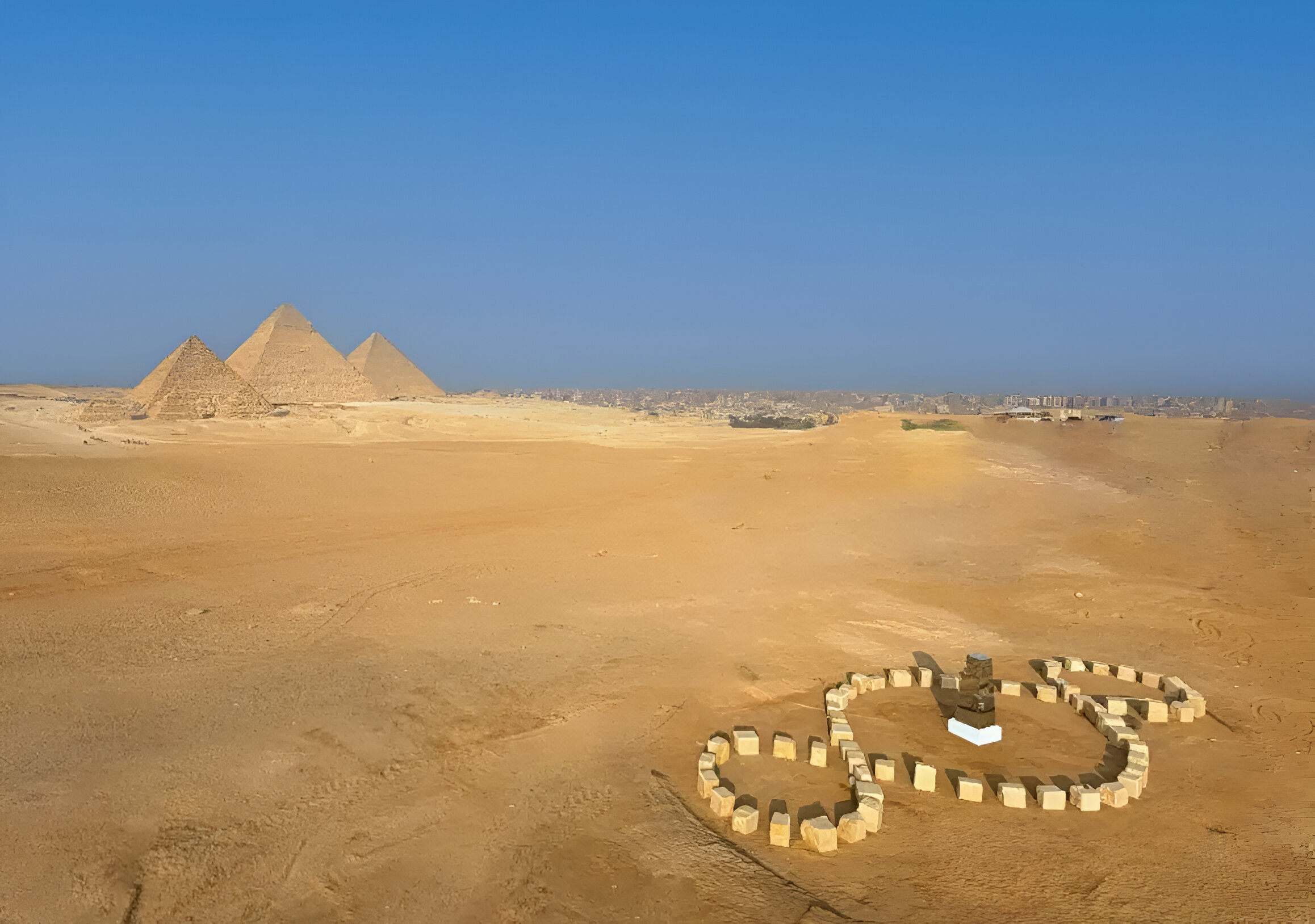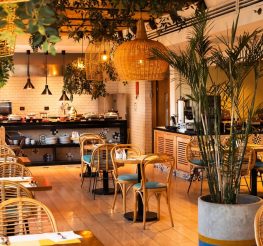Forever is Now 5th Edition: A Blend of History and Contemporary Art
Art D'Egypte Art Exhibition Forever Is Now Grand Pyramids of Giza
Nouran Awny
Image via website
Since its debut in 2020, Forever is Now has attracted thousands and thousands of people from all over the world. It has been celebrated as a very creative way to showcase global talent while highlighting the history of one of the most complex, most mesmerising works of art ever made, the Pyramids of Giza. This year is no different.
When and Where is Forever is Now

The exhibition has already started, running from the 11th of November until the 6th of December. It is being hosted at the iconic Pyramids of Giza.
You may be thinking that the tickets for this exhibition are costly and exclusive, available only to the elite and affluent, but the truth is the opposite: they are entirely free.
All you need to pay is the EGP 60 entrance fee to the pyramids, and no extra ticket is required for the exhibition.
Null by the Recycle Group

Image via website
Recycle Group, founded in 2008 by Andrey Blokhin and Georgy Kuznetsov, creates work that merges spiritual themes with digital culture, often using recycled materials and new tech. Based in Paris, the duo has exhibited internationally, including multiple Venice Biennale editions, with their art featured in major institutions and collections.
Null is a sculpture of mesh human forms that symbolises a fresh start and the rise of a new digital age. Zero becomes a modern counterpart to past spiritual markers. The mesh reflects our hollow digital shell, while the suspended figures depict humanity, increasingly caught in virtual networks and drifting away from tangible reality.
Ma’at by Salha El Masry
Saleha El Masry is a Cairo-born artist and critic who directs Bab Selim Gallery at the Museum of Modern Art. Her ceramic work blends contemporary practice with inspirations from early Egyptian cultures such as Badari, Naqada, and Maadi.
She uses ancient scripts, hieroglyphic, cuneiform, and others, as visual elements to highlight identity and the aesthetic power of symbols. Through many exhibitions, she focuses on linking Egypt’s ancient heritage with modern artistic expression.
Ma’at symbolises truth, justice, and cosmic balance. In this piece, an ancient king’s seal ring is reimagined as a public monument. Its circular form frames the pyramid behind it, creating a window between past and present.
Phrases from the Book of the Dead, about dignity, sustenance, and fairness, cover the surface, reflecting values the ancient Egyptians believed belonged to every person.
Third Paradise by Michelangelo Pistoletto

Image via website
Michelangelo Pistoletto rose to prominence in the 1960s with his Mirror Paintings and became a key figure in Arte Povera through his Minus Objects. Since then, he has expanded art into social and collaborative realms, founded Cittadellarte, and earned major international honours. His long-running project Third Paradise reflects his belief in art as a force for social transformation.
Third Paradise reimagines the infinity symbol with a central circle, expressing a new balance between nature and human creation. Guided by Pistoletto’s idea that 1 + 1 = 3, it emphasises relationships as generators of change. The installation uses recycled marble fragments from around the world, turning discarded materials into a symbol of renewal and global interconnectedness.
Desert Flowers by Nadim Karam
Nadim Karam is a multidisciplinary artist known for creating large-scale public sculptures that interact with cities and landscapes. After early work in Tokyo, he founded Atelier Hapsitus in Beirut in 1996, later expanding to Rotterdam as Nadim Karam Studio. Over the past thirty years, he has produced major public art projects worldwide, exhibited widely, taught in Japan and Lebanon, and published four monographs. He divides his time between Rotterdam and Beirut.
Desert Flowers presents three lotus-like sculptures rising from the sand near the Pyramids. Made from reused materials and scrap, each “flower” suggests hidden stories and the layers of history. Inspired by the ancient Egyptian lotus, symbol of renewal and creation, the series shows a progression: the first form is closed, the second opens, and the third is in full bloom.
recommended
 Shopping
Shopping
Black Friday 2025: Where to Find Discounts & Offers in Egypt
Affordable shopping black friday +3 Arts & Culture
Arts & Culture
Cairo Design Week 2025: A Celebration of Creativity Across the City
Art Galleries in Zamalek arts and crafts +3 Restaurants
Restaurants


